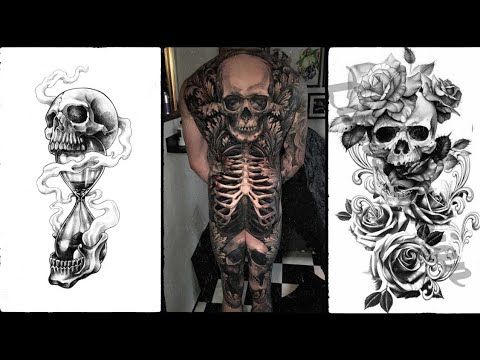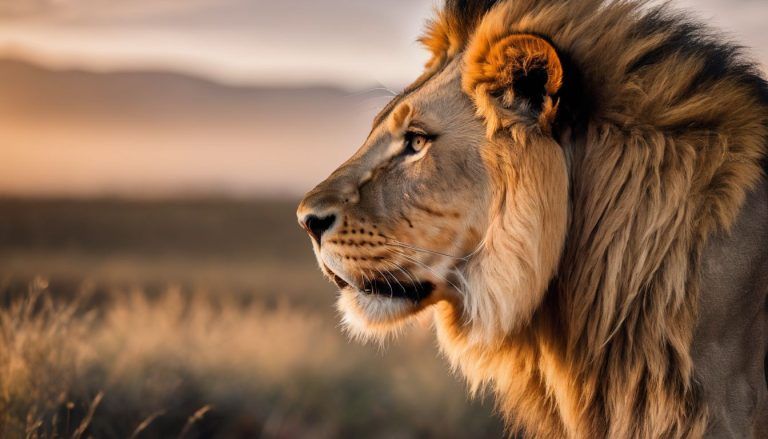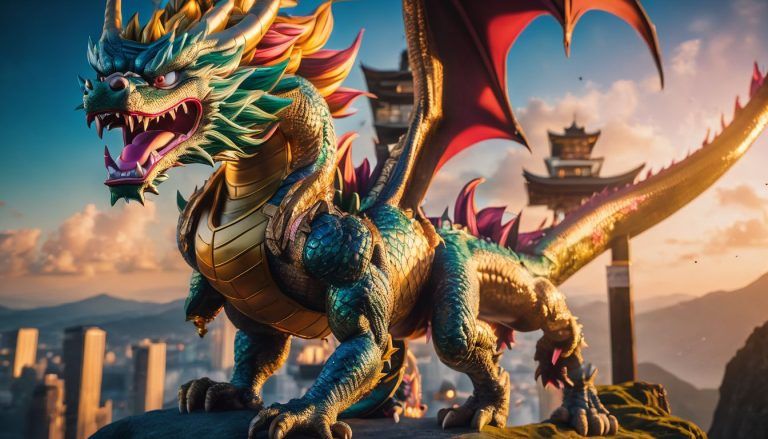Exploring the Symbolism and Meaning Behind Skeleton Tattoos
Are you curious about what a skeleton tattoo could mean on your skin? Skeleton tattoos aren’t just cool designs; they’re packed with deep meanings and history. This post will uncover the symbolism and significance behind these powerful images, guiding you through their diverse interpretations.
Get ready for an eye-opening journey into the world of skeleton tattoos!
Key Takeaways
- Skeleton tattoos embody diverse symbolism, representing themes such as death and mortality, fearlessness and rebellion, the afterlife, and the body’s fragility.
- Different styles of skeleton tattoos including traditional, neo – traditional, blackwork, and realism offer unique artistic expressions and interpretations that resonate with individuals seeking meaningful body art.
- Specific skeleton tattoo designs such as Grim Reaper, Day of the Dead imagery, skull and rose combinations, and skeleton couples hold significant cultural and personal meanings that add depth to the tattoos.
The Symbolism Behind Skeleton Tattoos
Skeleton tattoos hold various symbolic meanings, such as representing death and mortality, the afterlife, fearlessness and rebellion, and serving as a reminder of the body’s fragility.
These themes are often depicted through intricate designs that carry deep personal and cultural significance.
Death and Mortality
Skeleton tattoos serve as a stark reminder that life is fleeting and every moment is precious. They highlight our journey to the inevitable end, encouraging us to live fully and with purpose.
Many people choose a skeleton tattoo as an acceptance of their own mortality, embracing the cycle of life and death that governs all living things. These designs often carry a powerful message: to acknowledge death’s certainty can inspire a greater appreciation for life.
Within the inked outlines of bones and skulls lies a deep recognition that we are all temporary residents on this earth. This imagery urges us to consider what truly matters in our finite existence.
It nudges individuals towards self-reflection about their actions and legacies they wish to leave behind. By choosing such symbols for body art, one might find motivation in the face of life’s impermanence, using it as fuel to make meaningful choices each day.
The Afterlife
Moving from the symbolism of death and mortality, skeleton tattoos also evoke the idea of the afterlife. In many cultures, skeletons are associated with beliefs about what happens to a person’s essence or soul after death.
The imagery of skeletons in tattoos often reflects themes related to rebirth, transformation, and spiritual journeys post-death. Skeleton tattoos can serve as a reminder that life is finite and that there may be something beyond this existence.
In some interpretations, skeleton tattoos symbolize transcendence into another realm or state of being after passing away. They convey a sense of continuity even after physical life ends.
Fearlessness and Rebellion
Skeleton tattoos are often associated with fearlessness and rebellion, as they symbolize a fearless attitude towards mortality and the afterlife. The bold imagery of skeletons and skulls represents a defiance against societal norms and an embrace of individuality.
In some cultures, these tattoos are seen as a rebellious statement, challenging conventional ideas about life and death. Skeleton hand tattoos in particular symbolize the courage to confront one’s mortality head-on, reflecting a fearless outlook on life.
Alchemists believe that skeleton tattoos signify rebirth and shedding old beliefs or limitations. This symbolism embodies the spirit of rebellion against stagnation and conformity, encouraging individuals to embrace change and transformation.
Reminder of the Body’s Fragility
The skeleton tattoo serves as a reminder of the body’s fragility, symbolizing the impermanence of life. It represents our mortality and emphasizes the importance of living in the present moment.
Some cultures view skeletons as a poignant reminder to cherish life and make the most of every day, acknowledging that life is fleeting.
Furthermore, dancing skeleton tattoos are a vivid representation of this symbolism, serving as a potent reminder of both life and death. These designs effectively convey the delicate nature of existence and encourage individuals to appreciate each moment fully.
Different Styles of Skeleton Tattoos
Traditional, neo-traditional, blackwork, and realism are some of the different styles of skeleton tattoos that offer unique artistic interpretations and meanings. Read more to explore the diverse styles and their significance in skeleton tattoo designs.
Traditional
Traditional skeleton tattoos are characterized by bold lines, solid colors, and classic imagery. They often feature old-school designs with a focus on the iconic skull motif. Traditional skeleton tattoos hold deep significance in tattoo culture, symbolizing mortality, rebellion, and the afterlife.
The traditional style incorporates timeless elements that have been passed down through generations of tattoo artistry. This classic approach to skeleton tattoos serves as a powerful reminder of life’s impermanence and the enduring symbolism of death.
In some cultures, traditional skeleton tattoos are seen as a representation of rebirth and renewal rather than just focusing on morbidity or fear. They often incorporate intricate details such as roses or other symbolic elements to imbue them with additional meaning beyond mortality alone.
Neo-traditional
Moving on from the traditional style, Neo-traditional skeleton tattoos take inspiration from the classic design but incorporate a modern twist. This style uses bold lines and vibrant colors, adding more depth and dimension to the tattoo.
Neo-traditional skeleton tattoos often feature decorative elements like flowers, jewels, or ornate backgrounds, bringing in a contemporary feel while still honoring the traditional symbolism of life and death.
The incorporation of these modern elements allows for more creative expression while maintaining the timeless significance of skeleton imagery in tattoo art.
Blackwork
Blackwork tattoos, characterized by bold black ink designs, often feature intricate and detailed skeletal patterns. These tattoos hold deep symbolism, representing the contrast between life and death through their striking visual impact.
The use of negative space in these designs creates a dramatic effect, emphasizing the fragility and impermanence of life that is embodied by the skeleton imagery. Blackwork skeleton tattoos are not only aesthetically captivating but also serve as a poignant reminder of mortality and the transient nature of existence.
The process of creating blackwork tattoos involves precision and artistic skill to achieve the desired level of contrast and detail. This style’s simplicity enhances its powerful message, making it a popular choice for individuals looking to convey themes related to mortality, rebirth, or inner strength through their body art.
Realism
Realism in skeleton tattoos involves creating a design that closely resembles an actual human skeleton. This style focuses on intricate details and precise shading to make the tattoo look as lifelike as possible.
Realistic skeleton tattoos often feature accurate anatomical renderings, capturing the bones with a high level of detail, depth, and dimension. Artists use techniques like shading and highlighting to create a three-dimensional effect, giving the impression that the skeletal structure is beneath the skin.
Moving on from realism, let’s delve into the meaning of specific skeleton tattoo designs such as Grim Reaper, Day of the Dead, Skull and Rose, and Skeleton Couple.
Meaning of Specific Skeleton Tattoo Designs
Discover the symbolism and meaning behind popular skeleton tattoo designs such as the Grim Reaper, Day of the Dead imagery, skull and rose combinations, and skeleton couples. Each design holds significant cultural and personal meanings that add depth to the tattoos.
Grim Reaper
The Grim Reaper is often depicted in skeleton tattoos as a symbol of death. This motif represents the traditional personification of death, with its ominous black cloak and scythe.
In some cultures, the Grim Reaper is seen as a guide to the afterlife, bringing souls to their final resting place. The image can also convey fearlessness and rebellion against mortality, reminding people of the inevitability of death and the importance of living life to the fullest.
Tattoos featuring the Grim Reaper are often used to reflect on one’s own mortality or to pay tribute to lost loved ones. Some individuals may choose this design as a reminder that life should be cherished and not taken for granted.
Day of the Dead
Day of the Dead is a Mexican holiday that honors deceased loved ones. Skeleton tattoos inspired by this celebration often feature colorful and intricate designs, representing the joyful remembrance of those who have passed away.
These tattoos are rich in symbolism, signifying the cycle of life and death, as well as the importance of cherishing memories. Day of the Dead skeleton tattoos incorporate marigolds, sugar skulls, and other traditional elements to create vibrant and meaningful body art.
The tradition behind Day of the Dead provides a unique perspective on mortality and serves as a beautiful inspiration for tattoo designs. Embracing both life and death, these tattoos hold deep cultural significance while celebrating the memory of departed souls.
Skull and Rose
Skull and rose tattoos are a powerful combination of contrasting symbols. The skull represents mortality, change, fearlessness, and rebellion. Adding a rose to the design brings in themes of life, beauty, love, and even death’s association with rebirth.
This juxtaposition symbolizes the coexistence of life and death and serves as a reminder that both are intertwined within our existence.
The pairing also conveys deep emotions – from remembering lost loved ones to embracing one’s own mortality. For some people, it signifies strength during times of adversity while for others it embodies the transient nature of life itself.
Skeleton Couple
Moving from the symbolic combination of a skull and rose to the powerful imagery of a skeleton couple, this tattoo design holds a deeper meaning that showcases the unity and eternal bond between two individuals.
The skeleton couple tattoo represents love enduring beyond life and death, symbolizing commitment even in the afterlife. This striking symbol not only emphasizes love’s permanence but also serves as a reminder of mortality, highlighting that true love transcends earthly existence.
Skeleton couples depicted in various styles, such as traditional, neo-traditional, or realism variations, offer diverse ways for individuals to express their unique interpretations of everlasting love.
Placement and Meaning of Skeleton Tattoos
Skeleton tattoos are often placed in prominent areas of the body such as the hand, arm, chest, and even face to symbolize fearlessness and rebellion. Each placement holds its own meaning and adds to the overall significance of the tattoo.
Hand
Skeleton hand tattoos are a popular choice due to their powerful symbolism. They often represent mortality and the impermanence of life, making them a poignant reminder to live in the present.
In alchemy, the skeleton is seen as a symbol of rebirth and shedding old ways, adding depth to the meaning behind these tattoos. Furthermore, some individuals may opt for skeleton hand tattoos as an expression of fearlessness and rebellion against societal norms.
The placement of skeleton hand tattoos adds another layer of significance – being prominently visible makes them a constant reminder of life’s fleeting nature. The intricate design possibilities also allow for personal interpretations that can hold deep meaning for the wearer, reflecting on mortality or embracing change.
Arm
Transitioning from the symbolism and placement of skeleton tattoos on the hand, let’s explore their significance when inked onto the arm. When considering a skeleton tattoo on the arm, it’s important to note that this placement can symbolize strength and power, as our arms are often associated with resilience and action.
The arm is also a prominent location for displaying intricate designs such as detailed skeletal imagery or dancing skeletons intertwined with other elements. In addition to its visual impact, an arm tattoo serves as a constant reminder of life’s transient nature and encourages individuals to embrace fearless living in light of mortality.
Arm tattoos have long been associated with personal expression and cultural significance around the world. They provide an opportunity for individuals to display their beliefs, experiences, and identity through body art.
Skeleton tattoos specifically inked on the arm often convey themes of rebellion, faithfulness in love beyond death represented by roses incorporated into skull designs or commemorations of lost loved ones through intricately designed skeletal pieces.
Chest
Skeleton tattoos on the chest are often chosen to symbolize strength and protection. The chest is a prime location for larger, more detailed designs that can incorporate various elements such as roses or wings, adding depth and meaning to the tattoo.
Skull and rose combination tattoos on the chest can represent an appreciation for life’s beauty despite its inevitable end, while winged skull tattoos can signify freedom from mortality.
Many people choose to get skeleton tattoos on their chests as a way of expressing fearlessness and embracing their mortality. This placement allows for a bold statement that carries significant personal meaning.
Moreover, in some cultures, having a skeleton tattooed on the chest serves as a reminder of the transient nature of life and encourages individuals to live fully each day, appreciating the present moment rather than fearing death.
Face
Skeleton face tattoos are a bold expression of mortality and rebellion. They signify fearlessness and embracing the fragility of life. The skull on the face serves as a reminder to live each day fully, unapologetically, and without fear.
In some cultures, it also represents the afterlife and spiritual beliefs related to death.
When considering a skeleton face tattoo, it’s essential to understand its deep symbolism beyond its macabre appearance. Additionally, these tattoos often hold personal interpretations for individuals, making them a unique form of artistic expression.
Personal Interpretations and Cultural Significance of Skeleton Tattoos
Discussing the personal connections to the symbolism, cultural significance in different countries and cultures, and the evolution of skeleton tattoos in the tattoo industry. Explore how these tattoos reflect individual beliefs and societal norms.
Discover more about skeleton tattoos and their deeper meanings by reading on!
Personal connections to the symbolism
People often choose skeleton tattoos to represent personal experiences with death or as a reminder of the fragility and impermanence of life. Some individuals may have lost loved ones and use the symbolism of skeletons as a way to memorialize them, while others see it as a powerful expression of embracing mortality and living life to the fullest.
The cultural significance of skeleton tattoos varies widely; for example, in Mexican culture, Day of the Dead skeleton motifs are used to honor deceased relatives. Meanwhile, some view skeleton tattoos as an emblem of rebelling against societal norms and embracing fearlessness in the face of uncertainty.
Tattoo artist interpretations also play a significant role in personal connections with skeleton designs — many artists incorporate their clients’ stories into their work, resulting in highly personalized pieces loaded with emotional meaning.
Cultural significance in different countries and cultures
Across different countries and cultures, skeleton tattoos hold diverse cultural significance. In Mexican culture, the Day of the Dead skeleton tattoos are a symbol of celebrating deceased loved ones with vibrant colors and intricate designs.
Meanwhile, in Japan, skeletons are associated with ghosts and spirits in traditional folklore. Additionally, in Hinduism, the goddess Kali is often depicted with a necklace made of human skulls as a symbol of empowerment over death.
Moreover, within Native American traditions, skeletons can represent spiritual journeys or transitions into the afterlife. The varied cultural interpretations of skeleton tattoos demonstrate their universal symbolism across the world.
In some cultures such as Mexican and Japanese societies, colorful skeletal motifs signify a celebration of life after death; however negative connotations may still attach to them elsewhere.
Evolution of skeleton tattoos in the tattoo industry
Skeleton tattoos have evolved significantly in the tattoo industry over the years. From traditional black ink designs to more intricate and detailed styles such as neo-traditional and realism, artists constantly push boundaries in depicting skeletal imagery.
This evolution reflects a deeper understanding of the symbolism and cultural significance behind skeleton tattoos, allowing for more personalized and meaningful designs that resonate with individuals on a profound level.
As techniques advance and artistic interpretations expand, there has been an increase in the diversity of skeleton tattoo designs, catering to different preferences and beliefs. Artists now incorporate various elements such as flowers, animals, or symbols into skeleton tattoos, adding layers of meaning beyond mortality and death.
This evolution signifies a shift towards embracing the complexities of life while capturing the timeless allure of skeletal imagery.
Conclusion
In conclusion, skeleton tattoos hold deep and diverse symbolism that goes beyond representing death. These tattoos symbolize the beauty of life, rebellion, mortality, and the importance of living in the present.
With various styles, designs, and placements available, skeleton tattoos offer a unique way for individuals to express personal connections and cultural significance. As this art continues to evolve in the tattoo industry, its meanings will continue to reflect individual interpretations while honoring its traditional roots.
FAQs
1. What do skeleton tattoos mean?
Skeleton tattoos often symbolize life and death, reminding us of our mortality, or they can express a fascination with gothic or macabre themes.
2. Can a skeleton tattoo have a positive significance?
Yes, beyond their dark and spooky look, some people get skeleton tattoos to represent survival through tough times or transformation since skeletons are all that remain after life.
3. Where do people usually place skeleton tattoos on their bodies?
People choose different places for skeleton tattoos based on personal meaning but common spots include the arms, back, chest, and legs where bone tattoo art looks striking.
4. Why are skull symbols popular in skeletal tattoo designs?
Within the realm of dark tattoo art culture; skulls stand out as powerful symbols of death imagery and reminder of our human journey – from birth to passing away.
5. Are there different styles in skeletal tattoo art?
Definitely! Skeleton tattoo inspiration comes in various styles like creepy realistic scenes, abstract bone designs or even playful spooky versions depending on what’s meaningful to you.










